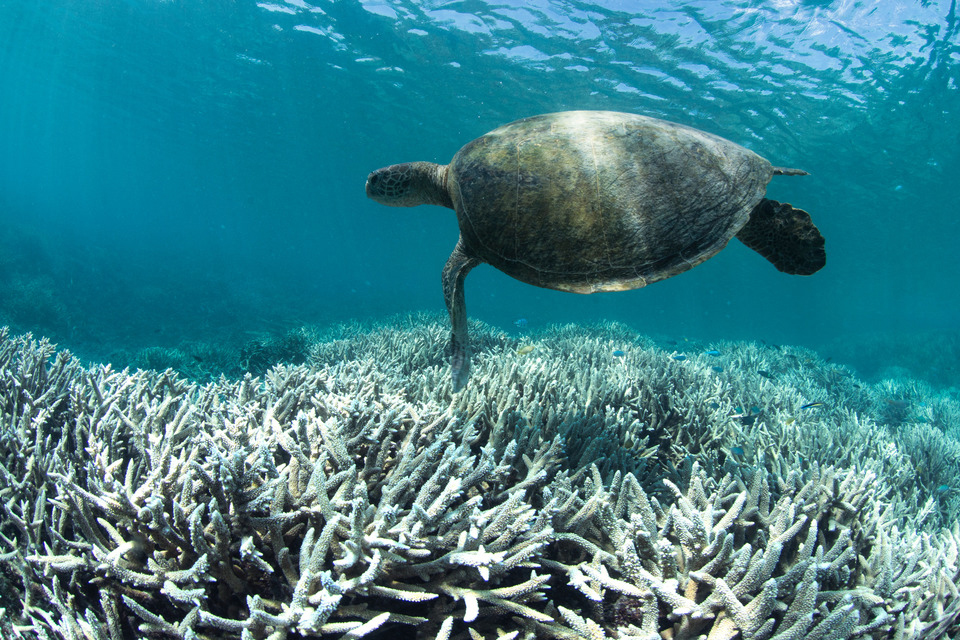By Professor Will Steffen, Climate Councillor
In recent days, thousands of people across New South Wales and the ACT have sweltered through another dangerous heatwave. Climate change is driving hotter and more frequent days like this and Australians are highly vulnerable.
The impacts of extreme weather on our health and wellbeing are escalating. The recent fires led to the deaths of nearly 500 Australians. The fires directly killed 33 people, and another 429 died from smoke inhalation. And heatwaves kill more Australians than all other extreme events combined. Climate-fuelled floods, droughts and violent storms all take their toll on our individual and community wellbeing.
Extreme weather events are also costly. A new report from the Climate Council finds the cost of extreme weather in Australia has more than doubled since the 1970s, and totalled $35 billion over the past decade. By 2038, extreme weather events driven by climate change, as well as the impacts of sea-level rise, could cost the Australian economy $100 billion every year.
The 2019-2020 period was remarkable for the number and intensity of extreme weather events, fuelled by climate change, that battered not only Australia but also many other parts of the world: unprecedented fires, extreme heat, powerful cyclones and devastating floods.
Here in Australia, the catastrophic Black Summer bushfires are still fresh in our minds. The impacts of this tragedy bear repeating. About 21% of our eastern broad-leafed forests burned, compared to an annual average of 2%. About three billion animals were either killed or displaced by the fires. The psychological damage that Australians suffered from this climate change-driven disaster was immense.
But that wasn’t all that climate change had in store for Australians in 2019-2020.
Exceptional heat in 2019 – the continent’s annual maximum temperature was over 2°C above average – challenged the coping capacity of humans. Penrith hit 48.9°C on 4 January 2020, making it the hottest place on Earth on that day. Over the 2019-2020 summer western Sydney recorded 37 days over 35°C.
Increasing heat in the oceans is also driving extreme events. Oceans around Australia have warmed by about 1°C since 1910, triggering three mass bleaching events of the Great Barrier Reef in just the last five years. The Reef is reeling, with 50% of its hard corals now dead. Kelp forests and sea grasses are also suffering permanent damage from warming seawater.
Other types of extreme weather events drove damaging impacts. Beaches and property along Sydney’s northern beaches and the NSW central coast were severely eroded by huge swells and high tides, riding on higher sea levels driven by climate change. In January 2020, giant hailstones rained down on Canberra, damaging cars and houses.
Globally, extreme weather events battered many parts of the planet, from Siberia to the tropics.
Perhaps the most astounding event of all was an intense, persistent and widespread heatwave in 2020 that spread across Siberia, breaking temperature records, triggering large fires, and thawing permafrost. The Russian town of Verkhoyansk recorded a temperature of 38°C in June, likely the highest temperature ever recorded in the Arctic.
There is no doubt that climate change played a large role in these weather extremes, particularly in their severity. As the Earth continues to warm, extreme weather events are occurring in a climate system that has become hotter and more energetic, and in an atmosphere that carries more water vapour. This increases the likelihood as well as the severity of extreme weather.
Scientists can now attribute particular extreme weather events to climate change by calculating the likelihood that a particular event could have occurred without climate change. For example, Australia’s hot spring in 2020 was ‘virtually impossible’ without the influence of climate change, and a similar attribution study showed that the 2020 Siberian heatwave was made at least 600 times more likely as a result of climate change.
Despite these disturbing realities, there is cause for some optimism. The United States under President Biden has prioritised climate action, our main trading partners have recently set net-zero emissions targets and the UN Secretary-General has called on governments to ensure their COVID recovery plans mark a ‘true turning point’ for people and the planet.
Read more about the impacts of climate change fuelled extreme weather in our new report, Hitting Home: the compounding costs of climate inaction.










